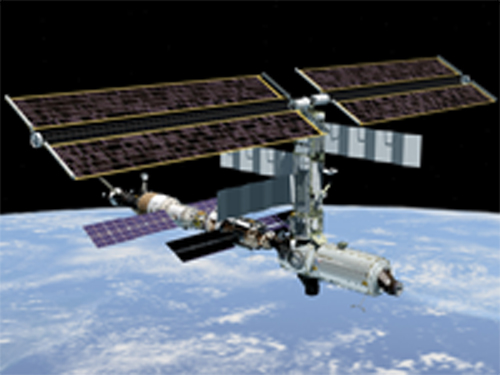ISRO all set to launch Oceansat-2 satellite
 Sriharikota, Sep 22 : The placing of the Polar Satellite Launch Vehicle (PSLV) with the Oceansat-2 by the Indian Space Research Organisation (ISRO) at the launch pad at the Satish Dhawan Space Centre in Sriharikota on Tuesday, signalled the countdown for the final launch.
Sriharikota, Sep 22 : The placing of the Polar Satellite Launch Vehicle (PSLV) with the Oceansat-2 by the Indian Space Research Organisation (ISRO) at the launch pad at the Satish Dhawan Space Centre in Sriharikota on Tuesday, signalled the countdown for the final launch.
This historic launch, scheduled on the afternoon of September 23 will put into space the indigenous Oceansat-2 as well as six other European nano-satellites, all weighing around 970 kilograms.
These piggy back riding satellite are two German two Rubinsats and four cubesats - the Beesat (assembled by Technical University, Berlin), UWE-2 (University of Wuerzburg, Germany), ITU-pSat (Istanbul Technical University, Turkey) and SwissCube-1 (Ecole Polytechnique Federal de Lausanne, Switzerland).
Oceansat-2 would carry an Ocean Colour Monitor (OCM) and a Ku-band pencil beam Scatterometer, besides a Radio Occultation Sounder for Atmospheric Studies
(Rosa), developed by the Italian Space Agency (ASI).
The Ku-band pencil beam Scatterometer with a ground resolution cell of 50 KMs X 50 KMs is expected to provide the wind vector range of four to 24 metres per second with better than 20% accuracy in speed and 20 degree in wind direction.
The on-board Scatterometer is a very good instrument for getting surface wind on the sea. It is required for sea state forecasting. And for maritime navigation, the wave height and disturbance is also important.
The eight-band OCM is similar to the one in Oceansat-1 with appropriate spectral bandwidth modifications based on the previous experience.
The OCM, with 360 metres spatial resolution and a swath of 1,420 kilometres would provide extensive communication links.
Since Oceansat-2 is a continuity mission to Oceansat-1, the same polar sun synchronous orbit of 720 kilometres has been retained.
However, unlike the Oceansat-1 that could essentially look at only the colour of the ocean, THE Oceansat-2 is a comprehensive system and would look at surface winds and temperature, among other things.
The satellite is intended for identification of potential fishing zones, weather forecasting and other trends of the sea, coastal zone studies and providing inputs for general meteorological observations.
Oceansat-2 is the sixteenth remote sensing satellite of India and has the shape of a cuboid with two solar panels projecting from the sides.
The Indian technocrats are expecting to increase the monitoring capacity of oceanic zones from the Oceansat-2.
The ISRO technocrats, who might have suffered a jolt with the untimely end of the Chandrayaan-I, last month, have put in all their expertise and efforts in the pre-launch activities at launch centre on an optimistic note. (ANI)